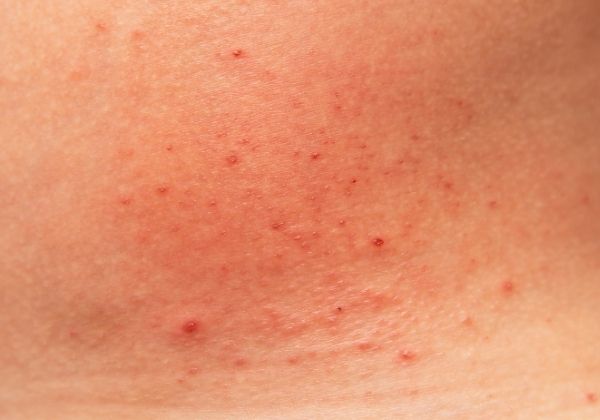A skin rash is an eruption of skin lesions that can cover any part of your body, and it's is a broad term that covers an assortment of lesions, each with its own cause and treatment.
Rashes can be localized to a small part of the body, or they can be more widespread, but they are typically linked to inflammation. They can also vary in appearance being dry, moist, bumpy, smooth, blistered, or cracked. Skin rashes are generally red in color and can often be itchy and uncomfortable.
Causes of Skin Rash
A number of things can cause a skin rash, including allergies, diseases, and reactions to medications. One of the most common causes of skin rash is contact dermatitis, also known as allergic eczema, which occurs when the skin reacts to something it has touched.
The skin becomes irritated and turns red from inflammation. Contact dermatitis rash is usually oozy and is caused by dyes in clothing, beauty products, chemicals, and poisonous plants.
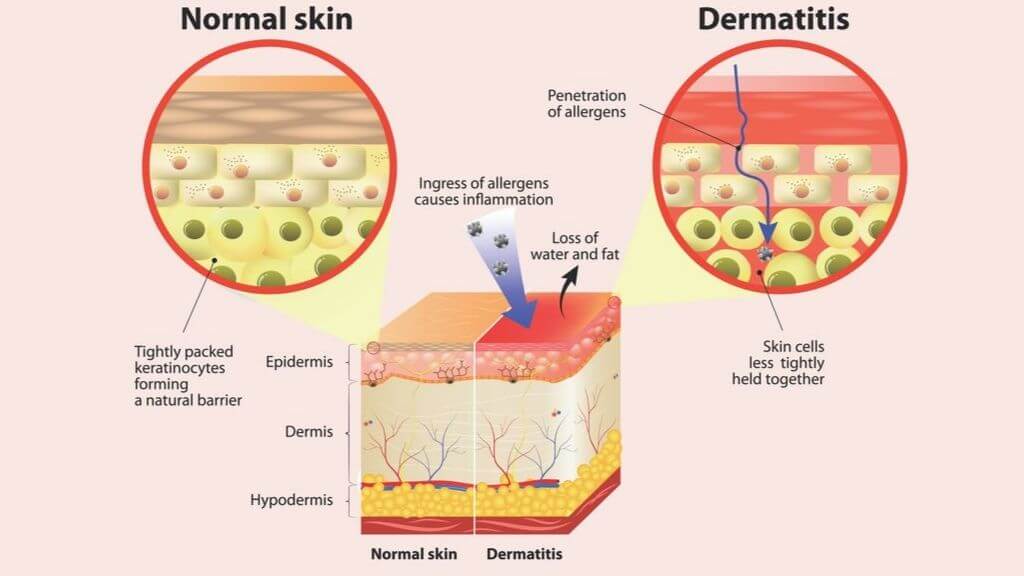
Medical conditions commonly associated with skin rashes include:
♦ Cellulitis: This is caused by a bacteria or fungi entering the skin through a crack or cut. The rash will be hot and tender to touch and may or may not have oozing. Fever and streaking from the rash is a sign of a more serious infection that requires immediate medical attention.
♦ Eczema: This is an itchy inflammation of the skin, causing widespread rashes. Yellow or white scaly patches appear and flake off, and hair loss can also occur. Eczema is a very common cause of skin rash with almost 3 million cases being diagnosed each year. Treatment involves avoiding irritants and medication for relief.
♦ Fifth disease: This is a rash caused by the parvovirus B19. It is common and highly contagious in children and produces a very distinctive face rash. The rash can be self-treated, and it usually clears up on its own. Pain relievers can help ease symptoms.
♦ Hand, foot, and mouth disease: This condition typically affects children under 5 and causes red spots on the palms of the hand and soles of the feet. Painful blisters also appear inside the mouth. It is caused by a viral infection and is treated with antiviral and anti-inflammatory medications.
♦ Impetigo: This is a highly contagious infection that affects children and infants. The infection causes blisters and sores around the mouth, chin, and nose that can burst easily, leaking pus. Antibiotics shorten the length of the infection, but it typically goes away on its own within a week or so.
♦ Psoriasis: This is a condition where cells accumulate and form scaly, dry patches. It typically affects the elbows, scalp, knees, and lower back and can be very itchy. Medications and stress management can reduce flare-ups.
♦ Rosacea: This is a chronic skin disease that appears in cycles. The rash is triggered by spicy foods, alcohol, sunlight, stress, and the intestinal bacteria H. pylori. The rash appears across the cheeks and looks like raised red bumps, flushed skin, and is very dry. Rosacea cannot be cured, but treatment can definitely help.
♦ Systemic lupus erythematosus (SLE): This is an autoimmune disease that affects different organs and parts of the body. Skin issues from rashes to ulcers are common with SLE, and they can get worse with sun exposure. The most common rash is a butterfly rash that crosses from cheek to cheek over the nose. Controlling inflammation is the best way to reduce the appearance of these rashes.
♦ Shingles: This is a reactivation of the chickenpox virus that causes a very painful rash. Clusters of fluid-filled bumps appear, and they are commonly accompanied by fever, chills, and headache. Shingles rash most commonly appears on the torso but can occur on other parts of the body too. Antiviral medications are used to treat this rash.
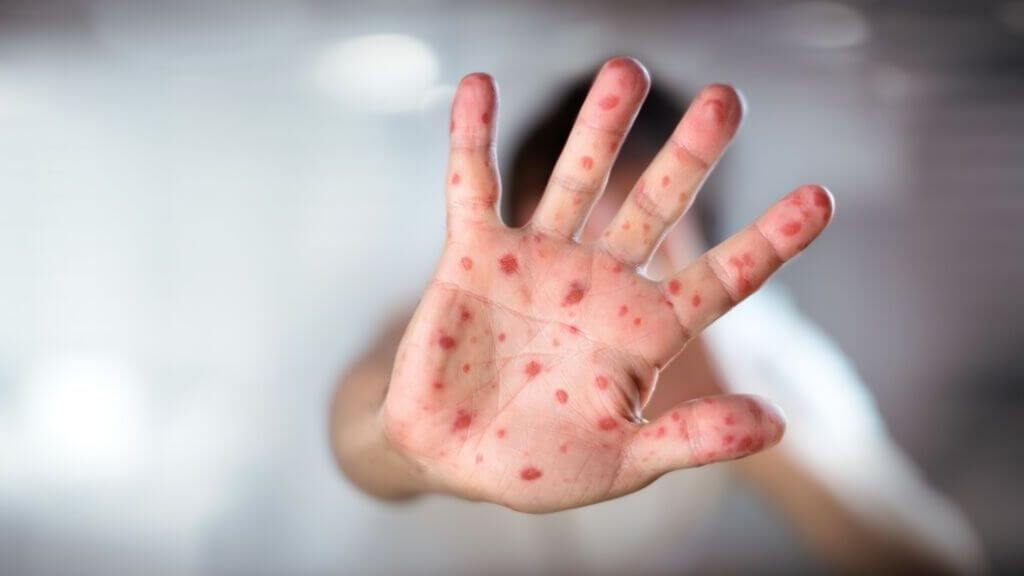
Diagnosing Skin Rash
A physical examination and close inspection of the skin rash is required for diagnosis. Your doctor will also ask about your medical history, when the rash appeared, your diet, hygiene, and any recent medications you have been taking.
The doctor may also take your temperature and order blood tests or take a biopsy if the cause for the rash is not immediately obvious. In most cases, where there is a medical condition underlying the rash, you will be referred to a specialist, such as a dermatologist for further treatment.
Skin Rash Treatment
The treatment for a skin rash will depend on the cause, and your doctor will prescribe the most effective medications or treatments. Over-the-counter medications can usually be taken for skin rash to help when pain is milder. Ibuprofen and acetaminophen are the most common medications used for skin rash.
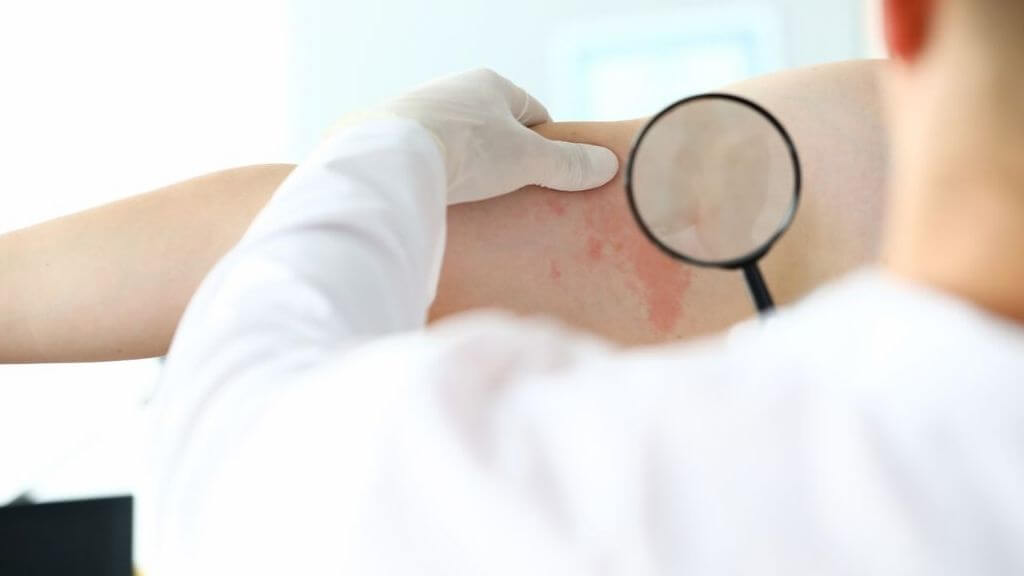
Speak with your doctor before taking these because long term use can have side effects. If the rash is recurring and requires more continued medication, a prescription from your doctor will be more effective.
Natural Treatment for Skin Rash
The underlying condition causing a skin rash may vary, but the direct cause is inflammation. There are several ways you can naturally reduce inflammation, all of which will reduce the development of skin rashes.
L-lysine is an amino acid that helps the body produce collagen. Maintaining collagen levels protects the skin from inflammation damage and can reduce the appearance of skin rashes. You can also reduce inflammation by promoting the health of the bacteria in your gut.
Probiotics support gut health, which enhances immunity. The bacteria in your gut make up 70 percent of the immune system, and they need to be balanced. If harmful bacteria are able to colonize, chronic inflammation can occur, which will produce skin rashes.
For those with conditions that include skin rashes as a symptom, reducing inflammation naturally can prevent this. The probiotics you try should include:
♦ Lactobacillus acidophilus
♦ Lactobacillus rhamnosus
In addition to medications and prescribed treatments, you can try a few home remedies and natural plant alternatives to help relieve the itching, inflammation, and discomfort of a skin rash.
It is important to check with your doctor first before trying any treatments yourself, to make sure there is no risk of further irritation or adverse reactions. To ease skin rash pain, you can try:
♦ Allowing the rash to breathe by not covering it
♦ Not rubbing or patting the rash
♦ Using a mild soap, so as not to cause further irritation
♦ Avoiding washing with hot water
♦ Avoiding scratching
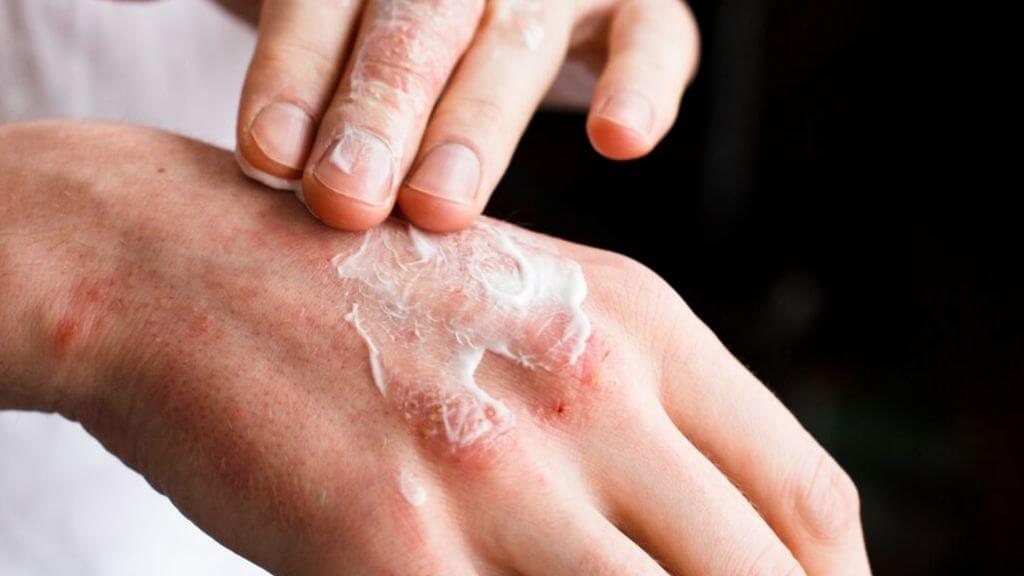
When to See a Doctor
If your rash ever occurs with any of the following symptoms, you need to see your doctor right away.
♦ Red streaks near the rash
♦ Sore throat
♦ Pain in the joints
♦ A large collection of pus
♦ Tender regions near the rash
Most rashes are harmless, but when they do not go away or become recurrent, there could be a more serious problem at hand. If you ever experience a rash with a high fever, confusion, dizziness, increased pain, or difficulty breathing, you should get to a hospital.
Skin rash can be treated effectively once the cause is identified, so understanding symptoms and what causes your rash is the best way to feel better.


